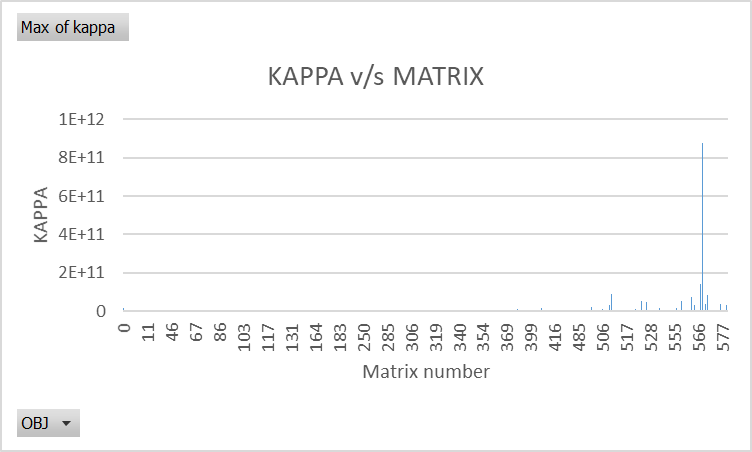Hi Experts
We are solving a bunch of pure LP problems sequentially with CPLEX
For e.g we solve matrix1, matrix2, matrix3, and so on till matrix N.
We want to decrease the total speed of the solve, since sometimes it can take upto 10+ hours to solve all these objectives
Typically we find that the solve time increases in some of the later objectives.
for e.g. a few objectives/matrices can account for maybe 50%+ of the total time of the solve.
So reducing the runtime for these objectives can reduce total runtime
There could be round off error causing problems with the later objectives.
If we check the kappa, condition number of the solve v/s the matrix number, we see that for some later matrix where the runtime is high,
the kappa number is high > 1e+11,
There are small changes being done from one matrix to another, mainly the objective changes and some bounds change,
some round off error can also creep in
But how can we find out/indentify which numbers in the matrix are contributing to this large increase in kappa?
Can you give some suggestions on how to "limit" the kappa so that it does not go very high?

Another question: in some cases in the solver log we see "Repairing basis singularity" Added to 1 columns superbasic list
Iteration: 116089 Objective = 394364959.655557
Repairing basis singularity.Added to 1 columns superbasic list.
Markowitz threshold set to 0.2
Iteration: 116552 Scaled infeas = 192.606291
Iteration: 116554 Objective = 394364958.608593
These messages also seem to be correlated to slowdown in the solve
What do these messages mean, and are there any suggestions on how to avoid basis becoming singular?
Are there any suggestions for identifying the data in the matrix that causes this problem and how to make changes in the data to avoid this problem?
Please note that this is not coming from the initial business data, these changes which cause these issues are likely happening due to some round off/numerical proprocessing between the solves, but i dont know how to identify the problematic data/prevent these problems from happening
Can you please give some recommendations/guidance on how to prevent these problems?
Thanks in advance
D
------------------------------
Lukka D
------------------------------
#DecisionOptimization